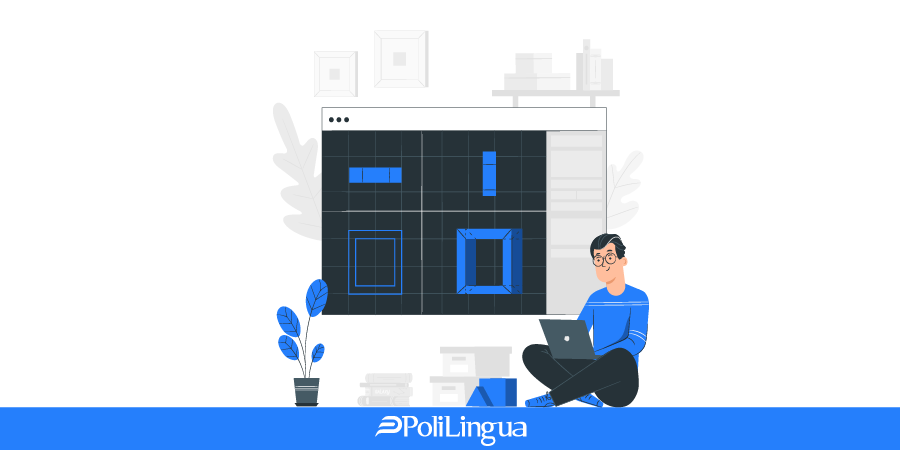
What is the difference between QA and QC?
Those who use language translation services know that agencies often offer QA and QC among other services. Fewer clients know what these letters stand for (it's Quality Assurance vs Quality Control, by the way), even fewer know what it actually means.
So let’s dive into the ocean of translating practices and find the answer that could amaze and astonish any curious mind in the galaxy. Maybe not, we’ll see about that.
First of all, let’s face the music by defining what exactly quality means. It’s definitely something good because if it weren’t, no ad would mention it in their mantras. After thinking it over for a while, we can come to a conclusion that all that quality thing boils down to a simple line - the quality of a product is when you as a translation agency hit all the right spots of the customer requirements and they get exactly what they asked for. Sounds like it’s a subjective thing? In more ways than one, it is. But it has a set of strict rules, too.
What is Quality Assurance?
Quality Assurance (QA) involves any systematic process used to determine if a product or service meets quality standards. In human, it means checking all the boxes to make sure the client gets what they want.
It’s a proactive process, meaning it occurs at the beginning of the project and outlines the guidelines, execution, and documentation required. It deals not as much with the translation itself as with the way it should be done to make sure the client gets what they want, and the translation agency gets what it deserves - no misunderstanding, no time-wasting, strictly the business.
Also, Quality Assurance activities let the translation agency assess the workload and to assign more translators if the deadline is tight or the volume of work requires it. Basically, it is the part of quality management system that allows it to go along with no stress, no drama.
What is Quality Control?
Unlike QA, Quality Control (QC) activities happen at the end of the translation project, when editors and product managers hunt for typos and errors that could creep into the text. They also check if the quality requirements set during the QA stage were met.
QC involves answering a lot of questions: Are all the illustrations placed on the pages they should be? Are there all the pages of the instruction included? Is the document in Comic Sans as the client repeatedly asked it to be? Are any other specifics meet the customer needs? So basically it's the system used to verify, made to control quality, and prevent defects from spoiling the joy of products' development.
The end product must be the way it is designed to be, and it’s up to Quality Control to make sure it is.
This is a reactive process, but not less important in any way. Quality Control ensures that the client, end-users, and any regulatory authority that might want to make an inquiry, are happy with what they see.
The star duo of QA and Quality Control makes any translation project a breeze, as it’s always better to plan and schedule than to run and scurry.

Yeah, but who is in charge of QC and QA?
There can be no clear rule for who should be responsible for Quality Assurance and Quality Control activities, and different companies could have different policies on this testing issue - they can even differ from project to project within an organization. But while both QA and QC can be in-house, and can be done by the same team, an outside Quality Assurance team definitely sheds some light on whether QA practices (or QC practices for that matter) are being implemented correctly. Again, this would depend upon how thought-out the company’s QA and project management practices are, and how exactly the agency wants to enhance them in the future.
I get it - QA and QC are basically the same thing, or not?
Well, in a way, they are, but they are not. There is a difference between quality assurance: QA is process-oriented meanwhile QC is product-oriented.
Most of the time, when we talk about product quality, we mean ‘Quality Assurance’. Though, it’s not wrong to call it that, for the translation business, it is not entirely correct either.
In the perfect world where everyone smiles and wears Ray-Bans, quality assurance is something that must start before translators even saw the text for the first time. It must begin when the client creates or looks for the source text that to be translated for them later. And many clients follow the rule - many, but not everyone (it’s not the perfect world after all).
The modern hectic way of life and doing business is the root cause that sucks the soul out of QA/QC activities, barring clients from QA-ing properly. As a result, freelancers and translation agencies are left on their own, having virtually no influence over the creation of source texts. It means QA activities start when clients email their materials in, that is, right before the translation process begins. Sometimes QA starts even AFTER the target text is done and it means clients will have a lot of questions, corrections, debugging, inspection, follow-ups, and upgrading. Will it save time, keep everyone’s nerves, and be a great beginning of a beautiful friendship and life? Not in a million years! All that gets you is a 2-star review on Yelp. And it is true as for translation, as for software development or software testing processes.
So if we want to perform a ‘real’ Quality Assurance, the one they tell us about in ancient myths and tales, we MUST start before the job even begins. Even if a translator can’t have a say in the creation of a source text, they can give it a read before going on with the translation.
The source of a potato quality is - yep! - the source of all problems. No secret there. It may be written by an expert who is not good with words and so the translation would be, though it’s not rare when the target text is more understandable than the source. (All hail translators!)
‘Wait… How is this?’ - you ask.
The thing is a translator doesn’t write or, if you will, create the text, they take it in one language and convert it into another, trying to make the target version as easy to understand as it gets. But if the source text is all cloudy and murky, it takes a bit of magic to make a Pulitzer Prize winner out of it. Some magic or a Quality Assurance process during which editors and project managers ask an awful lot of questions to let daylight in and clear the air.
Sounds good. But what is usually performed by translators and translation agencies, is not Quality Assurance (even though many of them really call that process QA), but Quality Control.

Still confused? Well…
The difference is quite simple.
While Quality Assurance begins from the very beginning of the process and goes through its every step, Quality Control polishes up a task after a certain step has already been done. Proofreading, for example, is QC, but at the same time, it is a part of QA. Though there can be numerous QC checks QC cannot replace QA, and QA cannot exist without QC. They are not interchangeable; they are connected and interlinked.
So, QA before QC, or QA the heck out of your text to ensure it’s what your clients want. Any way works as long as you deliver a high-quality product.
Adhering to this rule will get you ahead of the game.







